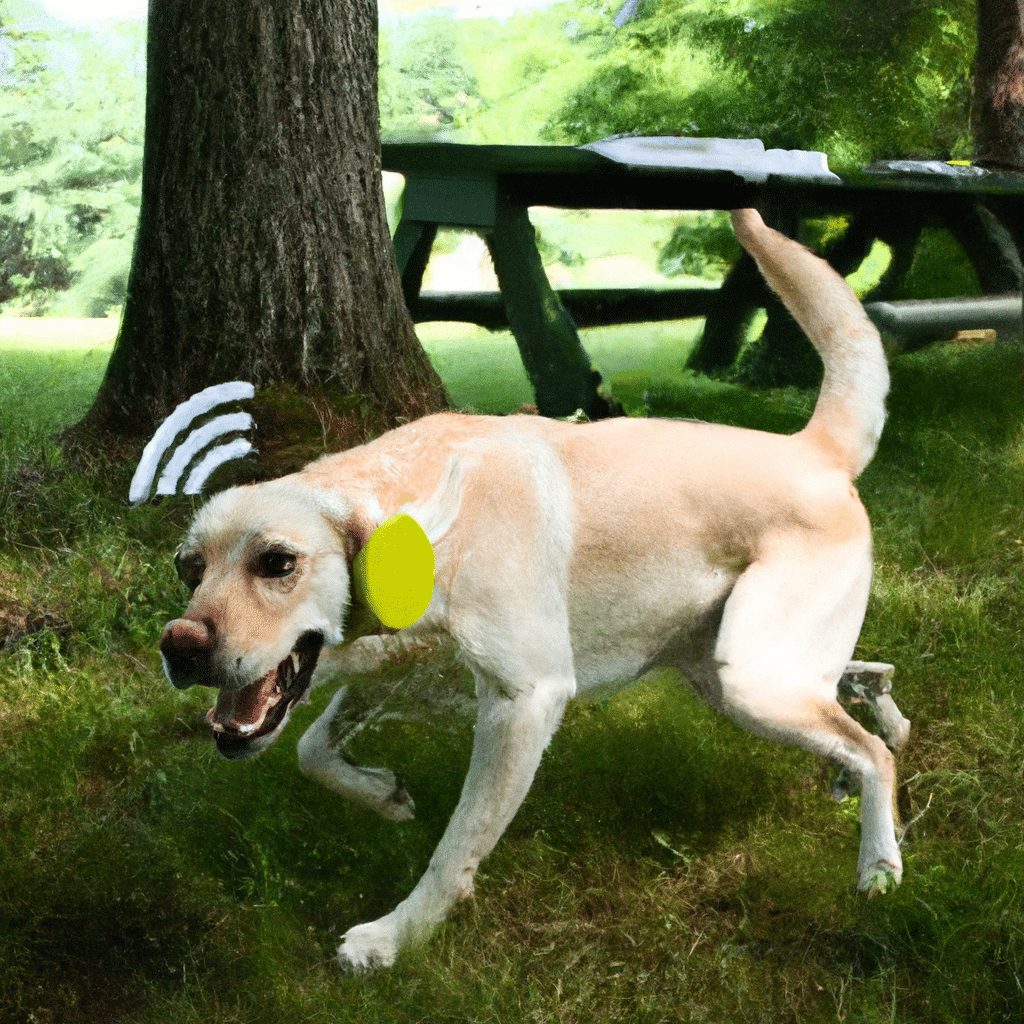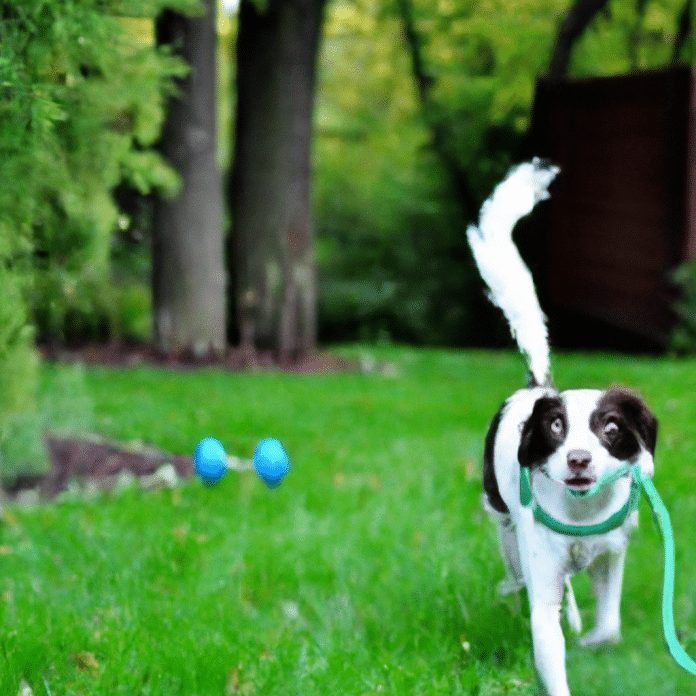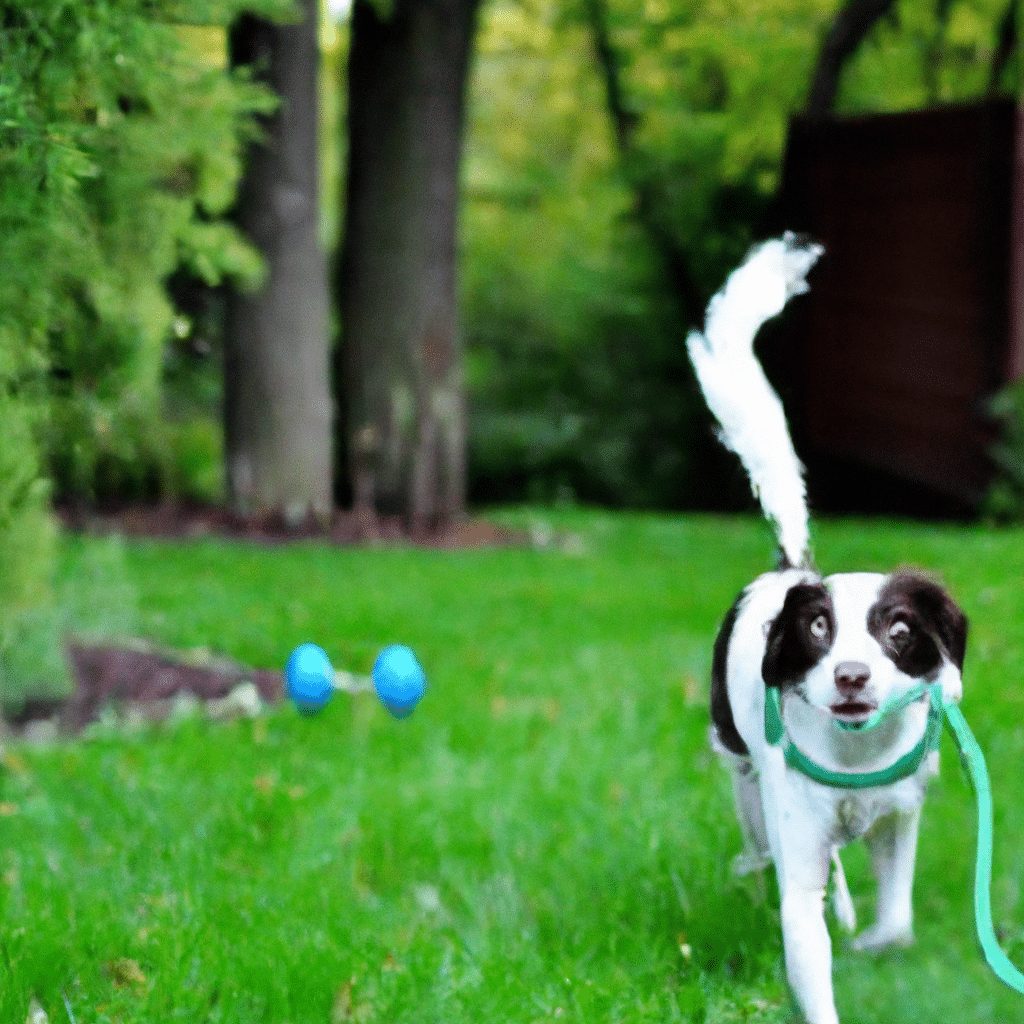Imagine the excitement of finally getting a wireless fence for your furry friend! But now you find yourself asking, “How do I introduce my dog to this innovative pet boundary system?” Well, fret not, because we’ve got you covered! In this article, we will guide you through some simple steps to ensure a smooth and stress-free introduction for your beloved canine companion. So, get ready to discover the secrets of successfully acclimating your dog to a wireless fence, and soon enough, you’ll have the peace of mind knowing your pup is safe and secure within your property boundaries.

Preparing for the Introduction
Choosing the Right Wireless Fence System
When it comes to choosing a wireless fence system for your furry friend, it’s important to consider a few factors. First and foremost, you’ll need to assess the size of your yard and choose a system that provides adequate coverage. Additionally, consider the number of dogs you have and ensure that the system can accommodate multiple pets if needed. Look for a system that is easy to set up and has adjustable settings to cater to your dog’s specific needs. Lastly, it’s always beneficial to read reviews and gather feedback from other pet owners to make an informed decision.
Understanding the Benefits of a Wireless Fence
A wireless fence can be a great solution for pet owners who want to provide their dogs with freedom and safety. These systems offer an invisible boundary that keeps your dog within a designated area without the need for physical fences. The benefits of a wireless fence include giving your dog the freedom to roam within a safe zone, preventing them from wandering off or straying into dangerous areas. It also eliminates the need for traditional fences that may obstruct your view or disrupt the aesthetic appeal of your property.
Gathering the Necessary Equipment
Before you begin setting up your wireless fence, make sure you have all the necessary equipment ready. This typically includes a transmitter, a receiver collar, boundary flags, and batteries. The transmitter is the central control unit that emits the signal, while the receiver collar is worn by your dog and receives the signal to alert them when they approach the boundary. Boundary flags are used during the training phase to provide a visual reference for your dog. Ensure that all the equipment is in good working condition and follow the manufacturer’s instructions for proper setup.
Selecting an Appropriate Training Method
Training plays a vital role in introducing your dog to a wireless fence system. There are several training methods available, so it’s important to choose one that aligns with your dog’s temperament and learning style. Positive reinforcement training is often recommended, as it focuses on rewarding your dog for good behavior rather than punishing them for undesirable actions. This approach helps create a positive association with the wireless fence and encourages your dog to stay within the boundaries. Consult with a professional dog trainer or conduct thorough research to find a training method that suits you and your dog best.
Setting Up the Wireless Fence
Determining the Boundaries
Before you can install the wireless fence system, you need to determine the boundaries of your dog’s designated area. Take into account the size of your yard, any physical obstacles or hazards, and the needs of your dog. It’s essential to create a safe and comfortable space for your furry friend to play and explore. Walk around the perimeter of your property and mentally map out the boundaries you want to set. This will guide you during the installation process and ensure that your dog has enough space to move around freely.
Installing the Transmitter and Receiver Collar
Once you have determined the boundaries, it’s time to install the transmitter and receiver collar. The transmitter should be placed in a central location in your home to ensure optimal coverage. Remember to position it away from large metal objects or appliances that may interfere with the wireless signal. The receiver collar should be securely fitted around your dog’s neck, allowing for a comfortable and proper fit. Follow the manufacturer’s instructions carefully to ensure that both the transmitter and receiver collar are correctly installed.
Testing the Signal Strength
After the transmitter and receiver collar are installed, it’s crucial to test the signal strength to ensure that the wireless fence is functioning correctly. Most systems have a test mode that allows you to check the boundaries without activating the correction function. Walk around the perimeter with the receiver collar and observe the signal strength indicated on the transmitter. Make any necessary adjustments to the transmitter’s settings to ensure that the signal is reliable and consistent throughout the designated area.
Adjusting the Settings
Every dog is unique, and their needs may vary when it comes to the wireless fence system. Some dogs may require a higher intensity setting, while others may respond well to a lower level. Adjust the settings on the transmitter to find the appropriate level for your dog. It’s important to strike a balance between ensuring your dog’s safety and preventing them from feeling overwhelmed or scared. Gradually increase the intensity if necessary, but always monitor your dog’s behavior and seek professional guidance if you’re uncertain about the best settings for your furry friend.
Initial Training Sessions
Acclimating Your Dog to the Collar
Before transitioning to the training sessions, allow your dog to get accustomed to wearing the receiver collar. Introduce the collar gradually, giving your dog time to sniff it, inspect it, and ultimately wear it. Start by attaching the collar without turning on the receiver function. Offer treats and praise to create a positive association with the collar. Repeat this process over a few days, gradually increasing the duration of collar wear. This acclimation phase helps your dog associate the collar with positive experiences, making the training sessions more effective.
Introducing Your Dog to the Boundary Flags
Boundary flags are an essential part of the training process and provide a visual cue for your dog to recognize the boundaries. Begin by placing the flags along the perimeter of the designated area. Take your dog for walks near the flags, allowing them to see and become familiar with their presence. Use treats and encouragement to guide your dog away from the flags when they approach them. With consistent repetition and positive reinforcement, your dog will learn to associate the flags with the boundary and understand where they should not go.
Teaching Basic Commands
When introducing your dog to a wireless fence, it’s crucial to reinforce basic commands such as “come,” “stay,” and “leave it.” These commands will serve as valuable tools in keeping your dog safe within the boundaries. Start training sessions in a controlled environment, away from distractions. Gradually introduce the commands while your dog is wearing the receiver collar and near the boundary flags. Use treats, verbal praise, and positive reinforcement to reward your dog for following the commands. Consistency and patience are key during this training phase.
Using Positive Reinforcement
Positive reinforcement is a highly effective training method when introducing your dog to a wireless fence. Reward your dog with treats, verbal praise, and affection when they exhibit desired behaviors such as staying within the boundaries, responding to commands, or avoiding the boundary flags. By associating positive experiences with the wireless fence and following the established rules, your dog will develop a strong understanding of their boundaries and be motivated to comply.
Gradual Introduction to Unrestricted Access
Supervised Off-Leash Time in the Safe Zone
Once your dog has demonstrated an understanding of the boundaries and basic commands, you can gradually introduce supervised off-leash time within the safe zone. Begin by allowing your dog to explore the designated area while closely monitoring their behavior. Reinforce the training commands and provide positive reinforcement for staying within the boundaries. Extend the duration of off-leash time gradually, ensuring that your dog remains within the safe zone and respects the established boundaries.
Gradually Expanding the Off-Leash Area
As your dog becomes more comfortable with the wireless fence system, you can gradually expand their off-leash area. This can be done by temporarily removing boundary flags in certain areas and allowing your dog to explore beyond the initial boundaries. However, it’s crucial to do this gradually and carefully. Monitor your dog’s behavior and response to ensure they understand the new boundaries. If any issues arise, such as attempts to escape or confusion, it may be necessary to reinforce training in the original boundaries before expanding further.
Monitoring Your Dog’s Behavior and Response
Throughout the process of introducing your dog to a wireless fence, it’s essential to closely monitor their behavior and response. Pay attention to any signs of stress, anxiety, or confusion. If your dog shows signs of fear or agitation, take a step back and review the training methods and settings. Every dog is different, and it’s important to make adjustments based on their individual needs. Regularly assess your dog’s behavior and response to ensure their well-being and the effectiveness of the wireless fence training.
Troubleshooting and Problem Solving
Addressing Barking and Aggression Issues
Some dogs may exhibit barking or aggression behaviors when introduced to a wireless fence system. This can be due to alarm or territorial instincts. If your dog shows signs of excessive barking or aggression towards people or other animals outside of the boundary, it’s important to address these issues promptly. Consult with a professional dog trainer or behaviorist to develop a tailored plan to manage and correct these behaviors. With the right approach and consistency, you can effectively address these challenges and ensure the successful use of the wireless fence system.
Handling Fear or Anxiety Reactions
In some cases, dogs may experience fear or anxiety when introduced to a wireless fence system. This can be due to the correction stimulus or the unfamiliarity of the boundaries. It’s important to approach these reactions with patience and understanding. Consider adjusting the settings to a lower intensity or seeking professional advice to help alleviate your dog’s fear or anxiety. Gradual desensitization through positive reinforcement training methods can also be beneficial in helping your dog overcome these reactions and feel more comfortable within the wireless fence boundaries.
Dealing with Boundary Challenges
Occasionally, dogs may challenge the boundaries, attempting to push the limits of the wireless fence. This can be a result of curiosity, distraction, or a desire to explore beyond the designated area. If this occurs, it’s important to reinforce training and establish clear boundaries. Redirect your dog’s attention and provide positive reinforcement for staying within the designated area. Regularly monitor the wireless fence system for any malfunctions or signal issues that may contribute to boundary challenges. Consistency and reinforcement of training will help address these challenges effectively.
Seeking Professional Guidance if Needed
If you encounter any difficulties or feel unsure about the training process, don’t hesitate to seek professional guidance. A qualified dog trainer or behaviorist can provide valuable insights and tailor training methods to suit your dog’s specific needs. They can assess your dog’s behavior, address any challenges, and provide the necessary guidance and support to ensure a successful introduction to the wireless fence system. Remember, professional assistance can make a significant difference in both your dog’s training experience and your peace of mind.
Maintenance and Long-Term Success
Regularly Checking and Maintaining the System
To ensure the long-term success of your wireless fence system, regular maintenance and checks are essential. Inspect the transmitter and receiver collar regularly for any damage, wear, or malfunction. Replace batteries as needed and keep spare batteries on hand. Test the signal strength periodically to ensure consistent and reliable performance. Additionally, check the boundary flags and replace any that are damaged or missing. By keeping your wireless fence system in optimal condition, you can ensure your dog’s safety and maintain the effectiveness of the training.
Continuing Training and Reinforcement
Training should not stop after the initial introduction to the wireless fence system. Ongoing training and reinforcement are necessary to reinforce your dog’s understanding of the boundaries and their compliance with commands. Dedicate regular training sessions to practice commands, reinforce positive behaviors, and further strengthen their association with the wireless fence. Consistency, repetition, and positive reinforcement will help your dog maintain their good behavior and ensure the long-term success of the wireless fence system.
Finding Additional Ways to Stimulate Your Dog
While a wireless fence provides safety and freedom for your dog, it’s important to remember that mental and physical stimulation are also crucial for their overall well-being. Engage in activities that challenge and engage your dog’s senses, such as puzzle toys, interactive play, and regular walks or runs. Consider training classes or agility courses to provide mental stimulation and bonding opportunities. A well-rounded approach to your dog’s life will help them thrive, not just within the wireless fence boundaries but in all aspects of their daily routine.
In conclusion, introducing your dog to a wireless fence requires careful planning, proper setup, effective training, and ongoing maintenance. By selecting the right wireless fence system, understanding the benefits, and gathering the necessary equipment, you set the stage for a successful introduction. Through gradual training sessions, positive reinforcement, and careful monitoring of your dog’s behavior, you can ensure their safety and the long-term success of the wireless fence system. If challenges arise, don’t hesitate to seek professional guidance as you work towards providing your furry friend with the freedom and security that a wireless fence offers.










































